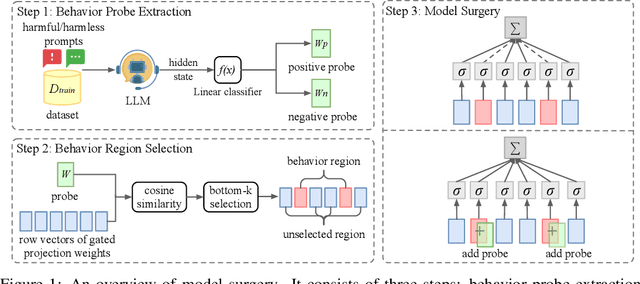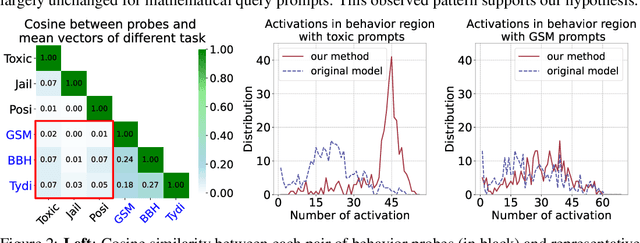Huanqian Wang
Emulating Human-like Adaptive Vision for Efficient and Flexible Machine Visual Perception
Sep 18, 2025Abstract:Human vision is highly adaptive, efficiently sampling intricate environments by sequentially fixating on task-relevant regions. In contrast, prevailing machine vision models passively process entire scenes at once, resulting in excessive resource demands scaling with spatial-temporal input resolution and model size, yielding critical limitations impeding both future advancements and real-world application. Here we introduce AdaptiveNN, a general framework aiming to drive a paradigm shift from 'passive' to 'active, adaptive' vision models. AdaptiveNN formulates visual perception as a coarse-to-fine sequential decision-making process, progressively identifying and attending to regions pertinent to the task, incrementally combining information across fixations, and actively concluding observation when sufficient. We establish a theory integrating representation learning with self-rewarding reinforcement learning, enabling end-to-end training of the non-differentiable AdaptiveNN without additional supervision on fixation locations. We assess AdaptiveNN on 17 benchmarks spanning 9 tasks, including large-scale visual recognition, fine-grained discrimination, visual search, processing images from real driving and medical scenarios, language-driven embodied AI, and side-by-side comparisons with humans. AdaptiveNN achieves up to 28x inference cost reduction without sacrificing accuracy, flexibly adapts to varying task demands and resource budgets without retraining, and provides enhanced interpretability via its fixation patterns, demonstrating a promising avenue toward efficient, flexible, and interpretable computer vision. Furthermore, AdaptiveNN exhibits closely human-like perceptual behaviors in many cases, revealing its potential as a valuable tool for investigating visual cognition. Code is available at https://github.com/LeapLabTHU/AdaptiveNN.
MME-VideoOCR: Evaluating OCR-Based Capabilities of Multimodal LLMs in Video Scenarios
May 27, 2025Abstract:Multimodal Large Language Models (MLLMs) have achieved considerable accuracy in Optical Character Recognition (OCR) from static images. However, their efficacy in video OCR is significantly diminished due to factors such as motion blur, temporal variations, and visual effects inherent in video content. To provide clearer guidance for training practical MLLMs, we introduce the MME-VideoOCR benchmark, which encompasses a comprehensive range of video OCR application scenarios. MME-VideoOCR features 10 task categories comprising 25 individual tasks and spans 44 diverse scenarios. These tasks extend beyond text recognition to incorporate deeper comprehension and reasoning of textual content within videos. The benchmark consists of 1,464 videos with varying resolutions, aspect ratios, and durations, along with 2,000 meticulously curated, manually annotated question-answer pairs. We evaluate 18 state-of-the-art MLLMs on MME-VideoOCR, revealing that even the best-performing model (Gemini-2.5 Pro) achieves an accuracy of only 73.7%. Fine-grained analysis indicates that while existing MLLMs demonstrate strong performance on tasks where relevant texts are contained within a single or few frames, they exhibit limited capability in effectively handling tasks that demand holistic video comprehension. These limitations are especially evident in scenarios that require spatio-temporal reasoning, cross-frame information integration, or resistance to language prior bias. Our findings also highlight the importance of high-resolution visual input and sufficient temporal coverage for reliable OCR in dynamic video scenarios.
Model Surgery: Modulating LLM's Behavior Via Simple Parameter Editing
Jul 11, 2024



Abstract:Large Language Models (LLMs) have demonstrated great potential as generalist assistants, showcasing powerful task understanding and problem-solving capabilities. To deploy LLMs as AI assistants, it is crucial that these models exhibit desirable behavioral traits, such as non-toxicity and resilience against jailbreak attempts. Current methods for detoxification or preventing jailbreaking usually involve Supervised Fine-Tuning (SFT) or Reinforcement Learning from Human Feedback (RLHF), which requires finetuning billions of parameters through gradient descent with substantial computation cost. Furthermore, models modified through SFT and RLHF may deviate from the pretrained models, potentially leading to a degradation in foundational LLM capabilities. In this paper, we observe that surprisingly, directly editing a small subset of parameters can effectively modulate specific behaviors of LLMs, such as detoxification and resistance to jailbreaking. Specifically, for a behavior that we aim to avoid, we employ a linear classifier, which we term the behavior probe, to classify binary behavior labels within the hidden state space of the LLM. Using this probe, we introduce an algorithm to identify a critical subset of LLM parameters that significantly influence this targeted behavior. Then we directly edit these selected parameters by shifting them towards the behavior probe. Such a direct parameter editing method necessitates only inference-level computational resources. Experiments demonstrate that in the representative detoxification task, our approach achieves reductions of up to 90.0\% in toxicity on the RealToxicityPrompts dataset and 49.2\% on ToxiGen, while maintaining the LLM's general capabilities in areas such as common sense, question answering, and mathematics. Our code is available at https://github.com/lucywang720/model-surgery.
Leveraging Reward Consistency for Interpretable Feature Discovery in Reinforcement Learning
Sep 04, 2023Abstract:The black-box nature of deep reinforcement learning (RL) hinders them from real-world applications. Therefore, interpreting and explaining RL agents have been active research topics in recent years. Existing methods for post-hoc explanations usually adopt the action matching principle to enable an easy understanding of vision-based RL agents. In this paper, it is argued that the commonly used action matching principle is more like an explanation of deep neural networks (DNNs) than the interpretation of RL agents. It may lead to irrelevant or misplaced feature attribution when different DNNs' outputs lead to the same rewards or different rewards result from the same outputs. Therefore, we propose to consider rewards, the essential objective of RL agents, as the essential objective of interpreting RL agents as well. To ensure reward consistency during interpretable feature discovery, a novel framework (RL interpreting RL, denoted as RL-in-RL) is proposed to solve the gradient disconnection from actions to rewards. We verify and evaluate our method on the Atari 2600 games as well as Duckietown, a challenging self-driving car simulator environment. The results show that our method manages to keep reward (or return) consistency and achieves high-quality feature attribution. Further, a series of analytical experiments validate our assumption of the action matching principle's limitations.
 Add to Chrome
Add to Chrome Add to Firefox
Add to Firefox Add to Edge
Add to Edge